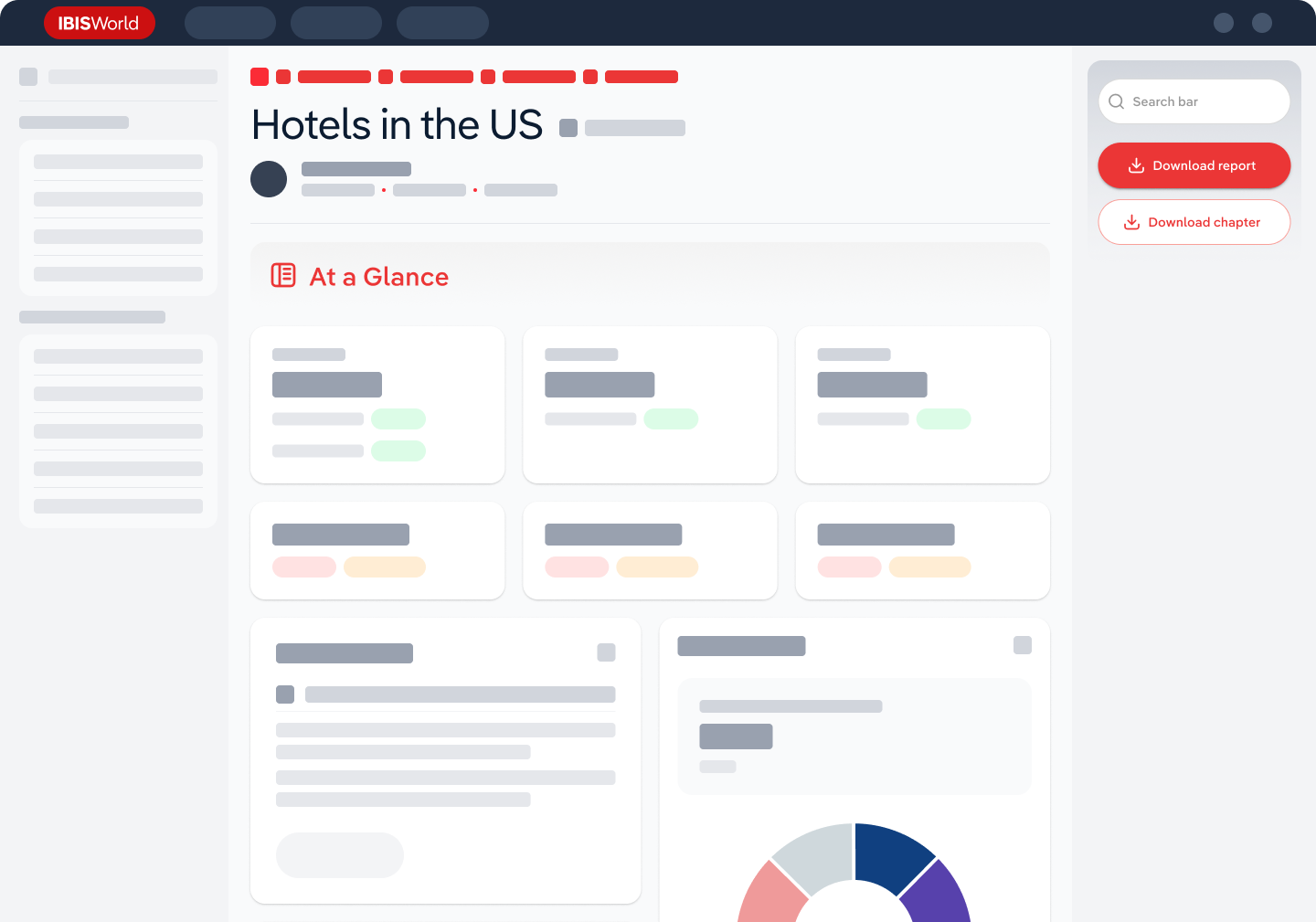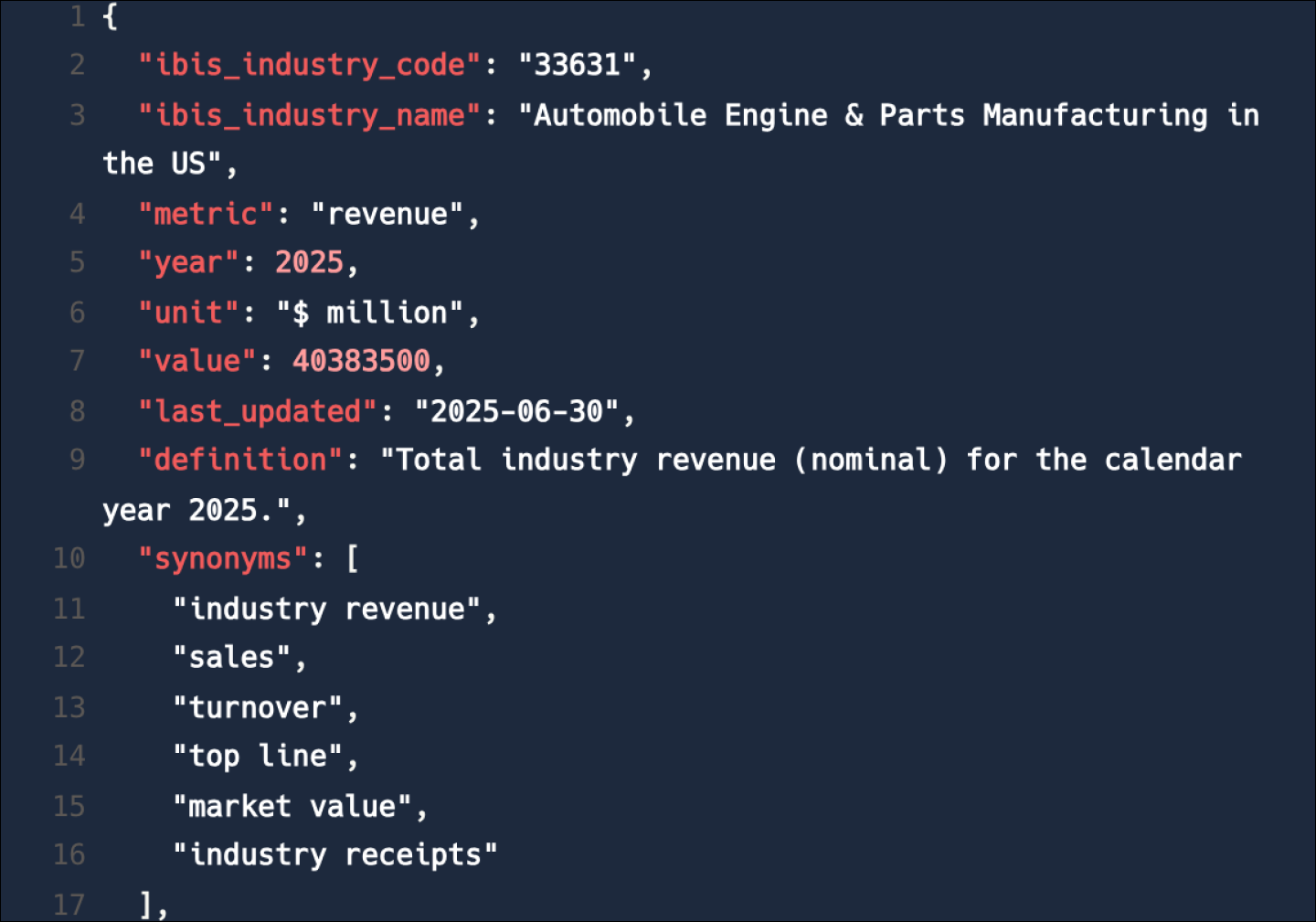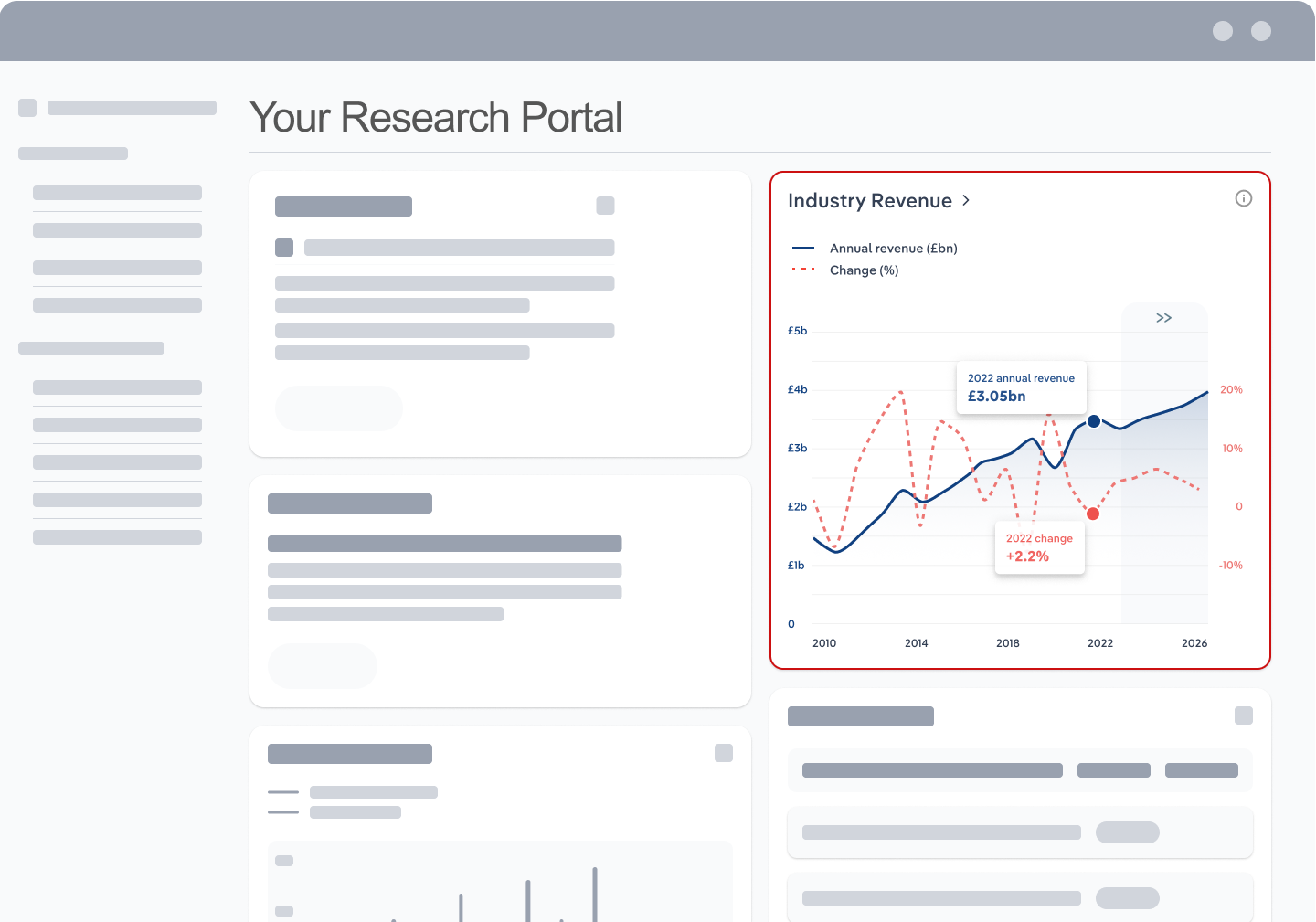Industry Statistics and Trends
Market size and recent performance (2015-2030)
Industry revenue has declined at a CAGR of 0.5 % over the past five years, to reach an estimated €28.4bn in 2025.
Trends and Insights
The sector is seen as a driver of integration in the German labour market
- The temporary employment sector in Germany plays an important role in the integration of refugees and foreign workers into the German labour market. Around a third of unemployed asylum seekers find a job through temporary employment agencies, which emphasises their function as a crucial entry point into employment. Companies in this sector not only offer jobs, but also language courses and cultural training to facilitate entry into the labour market. According to the Federal Employment Agency, the proportion of temporary workers with foreign nationality rose from 33.7% to 47% between 2018 and 2024, highlighting the increasing importance of this sector as a bridge into the labour market.
- Additional trends and insights available with purchase
Industry outlook (2025-2030)
Market size is projected to decline over the next five years.
Trends and Insights
The reformed immigration law strengthens the temporary employment sector in Germany with new sources of talent
- The comprehensive reform of the Skilled Immigration Act, which came into force in three stages between November 2023 and June 2024, was an important step towards facilitating access to skilled labour in Germany. A key innovation was the introduction of the "Opportunity Card" for jobseekers from June 2024, which enables qualified skilled workers worldwide to enter Germany on the basis of a points system in order to find a job locally. In addition, the recognition procedure for foreign qualifications has been simplified and the priority check has been abolished, making the process less bureaucratic for foreign workers.
Biggest companies in the Temporary-Employment Placement Agencies in Germany
| Company | Market Share (%)
2025 | Revenue (€m)
2025 |
|---|---|---|
Randstad N. V. | 1,712.0 | |
Adecco Germany Holding S.A. & Co. KG | 993.2 | |
Hays AG | 882.1 |
To view the market share and analysis for all 5 top companies in this industry, view purchase options.
Products & Services Segmentation
Industry revenue is measured across several distinct product and services lines, including Provision of auxiliary staff, Provision of skilled labour and Provision of specialists. Provision of auxiliary staff is the largest segment of the Temporary-Employment Placement Agencies in Germany.
Trends and Insights
The demand for auxiliary staff has increased in recent years
- The majority of workers hired out by temporary employment agencies are deployed in companies for unskilled labour. These are mainly employees with little education and few qualifications, and the proportion of women and refugees is also very high.
- More insights available in the full report
Table of Contents
About this industry
Industry definition
Companies in this sector are involved in hiring out labour for a limited period of time. The aim is to increase or temporarily strengthen the customer's workforce. The temporary workers are subject to the hirer's right to issue instructions, but at the same time remain employees of the temporary employment agency.
What's included in this industry?
Products and services covered in the Temporary-Employment Placement Agencies industry in Germany include Provision of auxiliary staff, Provision of skilled labour, Provision of specialists and Provision of experts.Companies
Companies covered in the Temporary-Employment Placement Agencies industry in Germany include Randstad N. V., Adecco Germany Holding S.A. & Co. KG and Hays AG.Purchase this report to view all 5 major companies in this industry.
Related Terms
Related terms covered in the Temporary-Employment Placement Agencies industry in Germany include labour pool/employee pool, borrowing companies, hired labour/wage labour/temporary work and vacancy time.Industry Code
WZ 78.20 - Temporary-Employment Placement Agencies in Germany
Performance
Get an indication of the industry's health through historical, current and forward-looking trends in the performance indicators that make or break businesses.
Analyst insights
The sector is regarded as the integration engine of the German labour market. Temporary work enables many people with limited job opportunities to find employment in the Germ...
In this chapter (4)
- Current Performance
- Outlook
- Volatility
- Life Cycle
Key metrics
- Annual Revenue, Recent Growth, Forecast, Revenue Volatility
- Number of Employees, Recent Growth, Forecast, Employees per Business, Revenue per Employee
- Number of Businesses, Recent Growth, Forecast, Employees per Business, Revenue per Business
- Total Profit, Profit Margin, Profit per Business
Charts
- Revenue, including historical (2015-2024) and forecast (2025-2030)
- Employees, including historical (2015-2024) and forecast (2025-2030)
- Businesses, including historical (2015-2024) and forecast (2025-2030)
- Profit, including historical (2015-2025)
- Industry Volatility vs. Revenue Growth
- Industry Life Cycle
Detailed analysis
- Trends in supply, demand and current events that are driving current industry performance
- Expected trends, economic factors and ongoing events that drive the industry's outlook
- Key success factors for businesses to overcome volatility
- How contribution to GDP, industry saturation, innovation, consolidation, and technology and systems influence the industry's life cycle phase.
Products and Markets
Learn about an industry's products and services, markets and trends in international trade.
Analyst insight
The temporary staffing sector generates the largest share of turnover with the temporary employment of unskilled labour. However, skilled workers are currently in particularl...
In this chapter
- Products & Services
- Major Markets
Key metrics
- Largest market segment and value in 2025
- Product innovation level
Charts
- Products & services segmentation in 2025
- Major market segmentation in 2025
Detailed analysis
- Trends impacting the recent performance of the industry's various segments
- Innovations in the industry's product or service offering, specialization or delivery method
- Key factors that successful businesses consider in their offerings
- Buying segments and key trends influencing demand for industry products and services
Geographic Breakdown
Discover where business activity is most concentrated in an industry and the factors driving these trends to find opportunities and conduct regional benchmarking.
Analyst insights
The Central region is home to the largest number of companies in the employee leasing sector. Companies in this region benefit from the abundance of potential employees and c...
In this chapter (1)
- Business Locations
Charts
- Share of revenue, establishment, wages and employment in each region
- Share of population compared to establishments in each region in 2025
Tables
- Number and share of establishments in each region in 2025
- Number and share of revenue each region accounts for in 2025
- Number and share of wages each region accounts for in 2025
- Number and share of employees in each region in 2025
Detailed analysis
- Geographic spread of the industry across Europe, and trends associated with changes in the business landscape
- Key success factors for businesses to use location to their advantage
Competitive Forces
Get data and insights on what's driving competition in an industry and the challenges industry operators and new entrants may face, with analysis built around Porter's Five Forces framework.
Analyst insights
Competition within the industry varies depending on the labour force in demand. Although companies try to differentiate themselves from one another by offering favourable rat...
In this chapter (4)
- Concentration
- Barriers to Entry
- Substitutes
- Buyer & Supplier Analysis
Key metrics
- Industry concentration level
- Industry competition level and trend
- Barriers to entry level and trend
- Substitutes level and trend
- Buyer power level and trend
- Supplier power level and trend
Charts
- Market share concentration among the top 4 suppliers from 2020-2025
- Supply chain including upstream supplying industries and downstream buying industries, flow chart
Detailed analysis
- Factors impacting the industry’s level of concentration, such as business distribution, new entrants, or merger and acquisition activity.
- Key success factors for businesses to manage the competitive environment of the industry.
- Challenges that potential industry entrants face such as legal, start-up costs, differentiation, labor/capital intensity and capital expenses.
- Key success factors for potential entrants to overcome barriers to entry.
- Competitive threats from potential substitutes for the industry’s own products and services.
- Key success factors for how successful businesses can compete with substitutes.
- Advantages that buyers have to keep favorable purchasing conditions.
- Advantages that suppliers have to maintain favorable selling conditions.
- Key success factors for how businesses can navigate buyer and supplier power.
Companies
Learn about the performance of the top companies in the industry.
Analyst insights
Randstad N. V. has the largest market share in the temporary employment sector. For the industry player, it is important to closely monitor market trends and know what measur...
In this chapter
- Market Share Concentration
- Companies
- Company Spotlights
Charts
- Industry market share by company in 2021 through 2025
- Major companies in the industry, including market share, revenue, profit and profit margin in 2025
- Overview of Randstad N. V.'s performance by revenue, market share and profit margin from 2019 through 2025
- Overview of Adecco Germany Holding S.A. & Co. KG's performance by revenue, market share and profit margin from 2019 through 2025
- Overview of Hays AG's performance by revenue, market share and profit margin from 2019 through 2025
- Overview of revenue, market share and profit margin trend for 2 additional companies
Detailed analysis
- Description and key data for Randstad N. V., and factors influencing its performance in the industry
- Description and key data for Adecco Germany Holding S.A. & Co. KG, and factors influencing its performance in the industry
- Description and key data for Hays AG, and factors influencing its performance in the industry
- Description, key data and performance trends for 2 additional companies
External Environment
Understand the demographic, economic and regulatory factors that shape how businesses in an industry perform.
Analyst insights
Since April 2017, the maximum duration of temporary employment has been enshrined in the German Temporary Employment Act. This means that the hirer may not assign the same te...
In this chapter
- External Drivers
- Regulation & Policy
- Assistance
Key metrics
- Regulation & policy level and trend
- Assistance level and trend
Charts
- Regulation & Policy historical data and forecast (2015-2030)
- Assistance historical data and forecast (2015-2030)
Detailed analysis
- Demographic and macroeconomic factors influencing the industry, including Regulation & Policy and Assistance
- Major types of regulations, regulatory bodies, industry standards or specific regulations impacting requirements for industry operators
- Key governmental and non-governmental groups or policies that may provide some relief for industry operators.
Financial Benchmarks
View average costs for industry operators and compare financial data against an industry's financial benchmarks over time.
Analyst insights
The profit margin of the individual companies depends heavily on the type of labour provided. The provision of specialist and skilled workers brings a significantly higher pr...
In this chapter
- Cost Structure
- Financial Ratios
- Key Ratios
Key metrics
- Profit margin, and how it compares to the sector-wide margin
- Average wages, and how it compares to the sector-wide average wage
- Largest cost component as a percentage of revenue
- Industry average ratios for days' receivables, industry coverage and debt-to-net-worth ratio
Charts
- Average industry operating costs as a share of revenue, including purchases, wages, depreciation, utilities, rent, other costs and profit in 2025
- Average sector operating costs as a share of revenue, including purchases, wages, depreciation, utilities, rent, other costs and profit in 2025
- Investment vs. share of economy
Data tables
- Cash Flow & Debt Service Ratios (2015-2030)
- Revenue per Employee (2015-2030)
- Revenue per Enterprise (2015-2030)
- Employees per Establishment (2015-2030)
- Employees per Enterprise (2015-2030)
- Average Wage (2015-2030)
- Wages/Revenue (2015-2030)
- Establishments per Enterprise (2015-2030)
- IVA/Revenue (2015-2030)
- Imports/Demand (2015-2030)
- Exports/Revenue (2015-2030)
Detailed analysis
- Trends in the cost component for industry operators and their impact on industry costs and profitability
Key Statistics
Industry Data
Data Tables
Including values and annual change:
- Revenue (2015-2030)
- IVA (2015-2030)
- Establishments (2015-2030)
- Enterprises (2015-2030)
- Employment (2015-2030)
- Exports (2015-2030)
- Imports (2015-2030)
- Wages (2015-2030)
Top Questions Answered
Unlock comprehensive answers and precise data upon purchase. View purchase options.
What is the market size of the Temporary-Employment Placement Agencies industry in Germany in 2025?
The market size of the Temporary-Employment Placement Agencies industry in Germany is €28.4bn in 2025.
How many businesses are there in the Temporary-Employment Placement Agencies industry in Germany in 2025?
There are 5,608 businesses in the Temporary-Employment Placement Agencies industry in Germany, which has declined at a CAGR of 0.0 % between 2020 and 2025.
How may import tariffs affect the Temporary-Employment Placement Agencies industry in Germany?
The Temporary-Employment Placement Agencies industry in Germany is unlikely to be materially impacted by import tariffs with imports accounting for a low share of industry revenue.
How may export tariffs affect the Temporary-Employment Placement Agencies industry in Germany?
The Temporary-Employment Placement Agencies industry in Germany is unlikely to be materially impacted by export tariffs with exports accounting for a low share of industry revenue.
Has the Temporary-Employment Placement Agencies industry in Germany grown or declined over the past 5 years?
The market size of the Temporary-Employment Placement Agencies industry in Germany has been declining at a CAGR of 0.5 % between 2020 and 2025.
What is the forecast growth of the Temporary-Employment Placement Agencies industry in Germany over the next 5 years?
Over the next five years, the Temporary-Employment Placement Agencies industry in Germany is expected to decline.
What are the biggest companies in the Temporary-Employment Placement Agencies industry in Germany?
The biggest companies operating in the Temporary-Employment Placement Agencies industry in Germany are Randstad N. V., Adecco Germany Holding S.A. & Co. KG and Hays AG
What does the Temporary-Employment Placement Agencies industry in Germany include?
Provision of auxiliary staff and Provision of skilled labour are part of the Temporary-Employment Placement Agencies industry in Germany.
Which companies have the highest market share in the Temporary-Employment Placement Agencies industry in Germany?
The company holding the most market share in the Temporary-Employment Placement Agencies industry in Germany is Randstad N. V..
How competitive is the Temporary-Employment Placement Agencies industry in Germany?
The level of competition is high and steady in the Temporary-Employment Placement Agencies industry in Germany.
Methodology
How are IBISWorld reports created?
IBISWorld has been a leading provider of trusted industry research for over 50 years to the most successful companies worldwide. With offices in Australia, the United States, the United Kingdom, Germany and China, we are proud to have local teams of analysts that conduct research, data analysis and forecasting to produce data-driven industry reports.
Our analysts start with official, verified and publicly available sources of data to build the most accurate picture of each industry. Analysts then leverage their expertise and knowledge of the local markets to synthesize trends into digestible content for IBISWorld readers. Finally, each report is reviewed by one of IBISWorld’s editors, who provide quality assurance to ensure accuracy and readability.
IBISWorld relies on human-verified data and human-written analysis to compile each standard industry report. We do not use generative AI tools to write insights, although members can choose to leverage AI-based tools within the platform to generate additional analysis formats.
What data sources do IBISWorld analysts use?
Each industry report incorporates data and research from government databases, industry-specific sources, industry contacts, and our own proprietary database of statistics and analysis to provide balanced, independent and accurate insights.
Key data sources in Germany include:
- German Federal Statistics Office (Destatis)
- European Statistics Office (Eurostat)
- United Nations Comtrade
Analysts also use industry specific sources to complement catch-all sources, although their perspective may focus on a particular organization or representative body, rather than a clear overview of all industry operations. However, when balanced against other perspectives, industry-specific sources provide insights into industry trends.
These sources include:
- Industry and trade associations
- Industry federations or regulators
- Major industry players annual or quarterly filings
Finally, IBISWorld’s global data scientists maintain a proprietary database of macroeconomic and demand drivers, which our analysts use to help inform industry data and trends. They also maintain a database of statistics and analysis on thousands of industries, which has been built over our more than 50-year history and offers comprehensive insights into long-term trends.
How does IBISWorld forecast its data?
IBISWorld’s analysts and data scientists use the sources above to create forecasts for our proprietary datasets and industry statistics. Depending on the dataset, they may use regression analysis, multivariate analysis, time-series analysis or exponential smoothing techniques to project future data for the industry or driver. Additionally, analysts will leverage their local knowledge of industry operating and regulatory conditions to impart their best judgment on the forecast model.
IBISWorld prides itself on being a trusted, independent source of data, with over 50 years of experience building and maintaining rich datasets and forecasting tools. We are proud to be the keystone source of industry information for thousands of companies across the world.
Learn more about our methodology and data sourcing on the Help Center.










